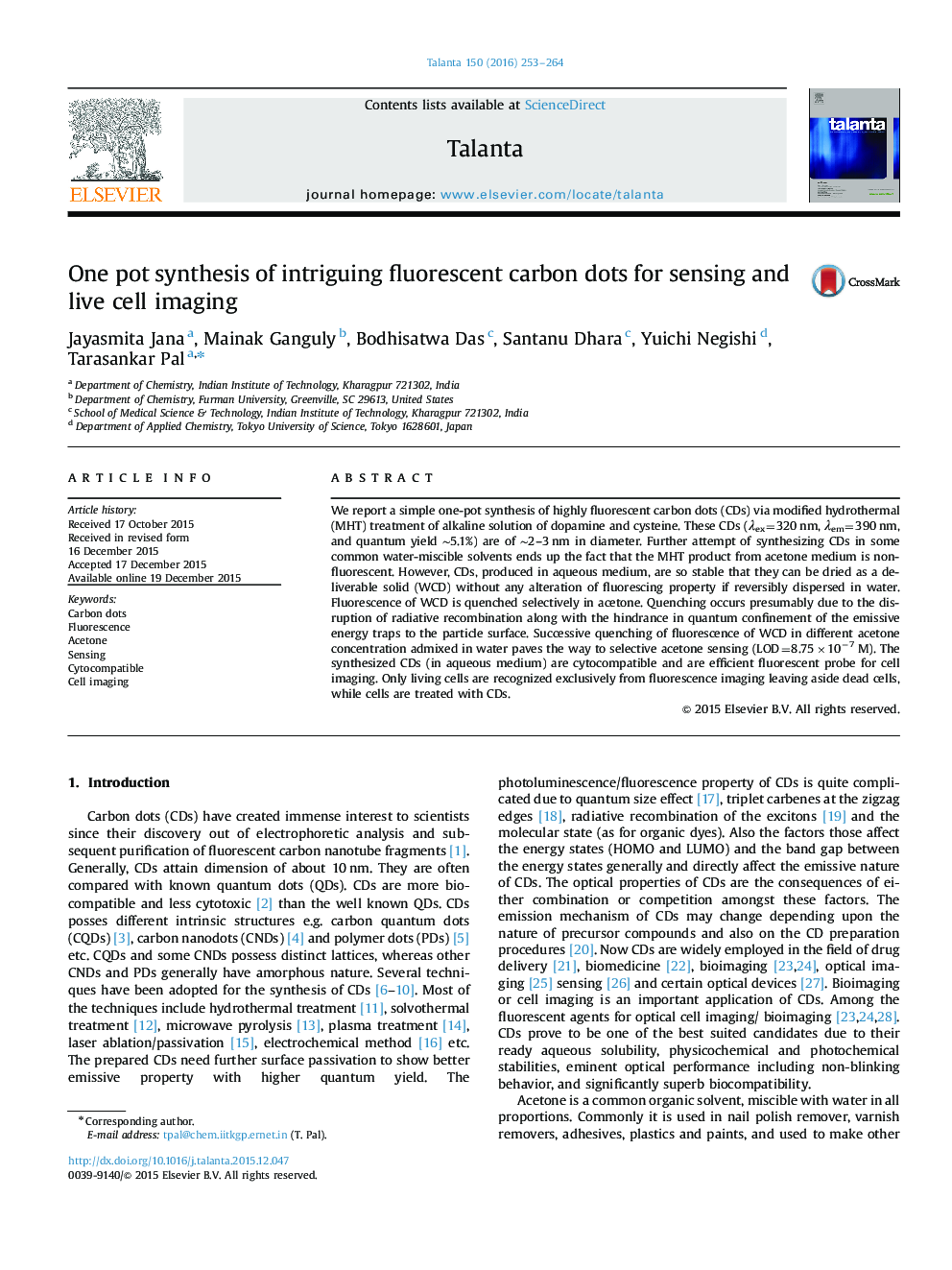| Article ID | Journal | Published Year | Pages | File Type |
|---|---|---|---|---|
| 1242169 | Talanta | 2016 | 12 Pages |
•Facile synthesis of highly fluorescent carbon dots from the alkaline solution of dopamine and cysteine mixture.•Acetone quenches the huge fluorescence of the as prepared carbon dots paving the way of detection of acetone in water.•Acetone can be detected even at a [acetone]: [water] molar ratio=8.75×10−7:1.•These carbon dots are biocompatible and work as fluorescent probes for selectively live cell imaging.
We report a simple one-pot synthesis of highly fluorescent carbon dots (CDs) via modified hydrothermal (MHT) treatment of alkaline solution of dopamine and cysteine. These CDs (λex=320 nm, λem=390 nm, and quantum yield ∼5.1%) are of ∼2–3 nm in diameter. Further attempt of synthesizing CDs in some common water-miscible solvents ends up the fact that the MHT product from acetone medium is nonfluorescent. However, CDs, produced in aqueous medium, are so stable that they can be dried as a deliverable solid (WCD) without any alteration of fluorescing property if reversibly dispersed in water. Fluorescence of WCD is quenched selectively in acetone. Quenching occurs presumably due to the disruption of radiative recombination along with the hindrance in quantum confinement of the emissive energy traps to the particle surface. Successive quenching of fluorescence of WCD in different acetone concentration admixed in water paves the way to selective acetone sensing (LOD=8.75×10−7 M). The synthesized CDs (in aqueous medium) are cytocompatible and are efficient fluorescent probe for cell imaging. Only living cells are recognized exclusively from fluorescence imaging leaving aside dead cells, while cells are treated with CDs.
Graphical abstractFigure optionsDownload full-size imageDownload as PowerPoint slide
